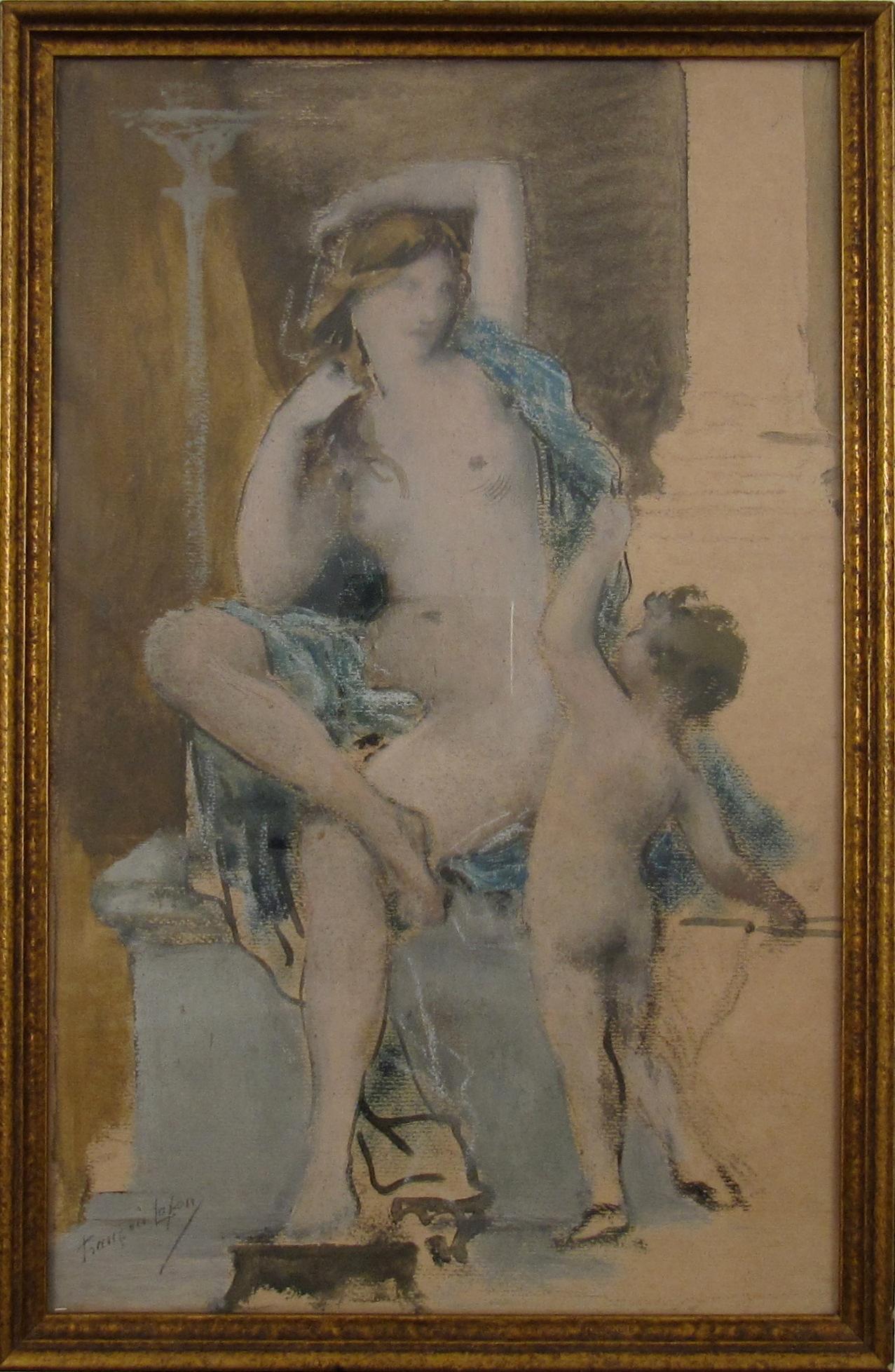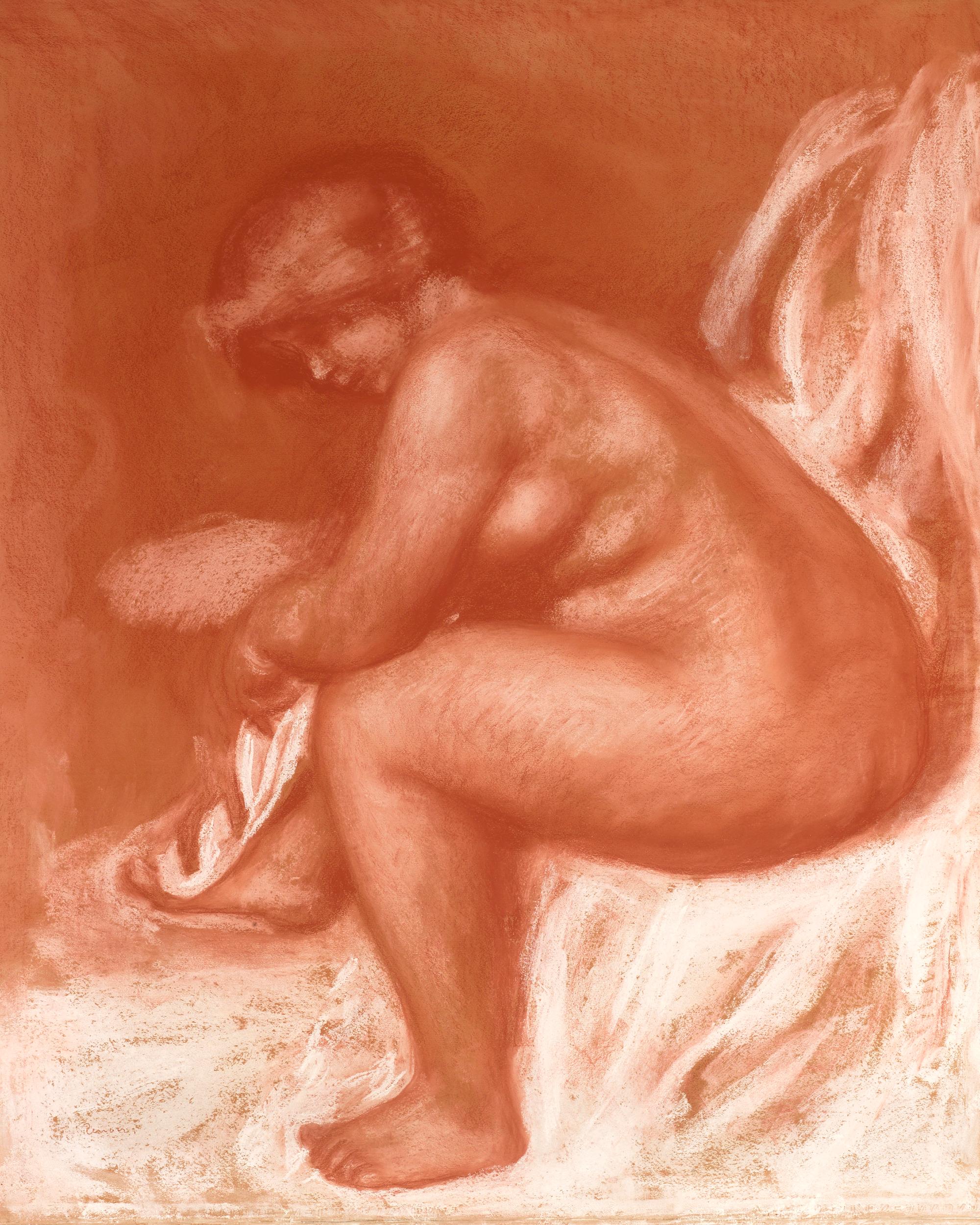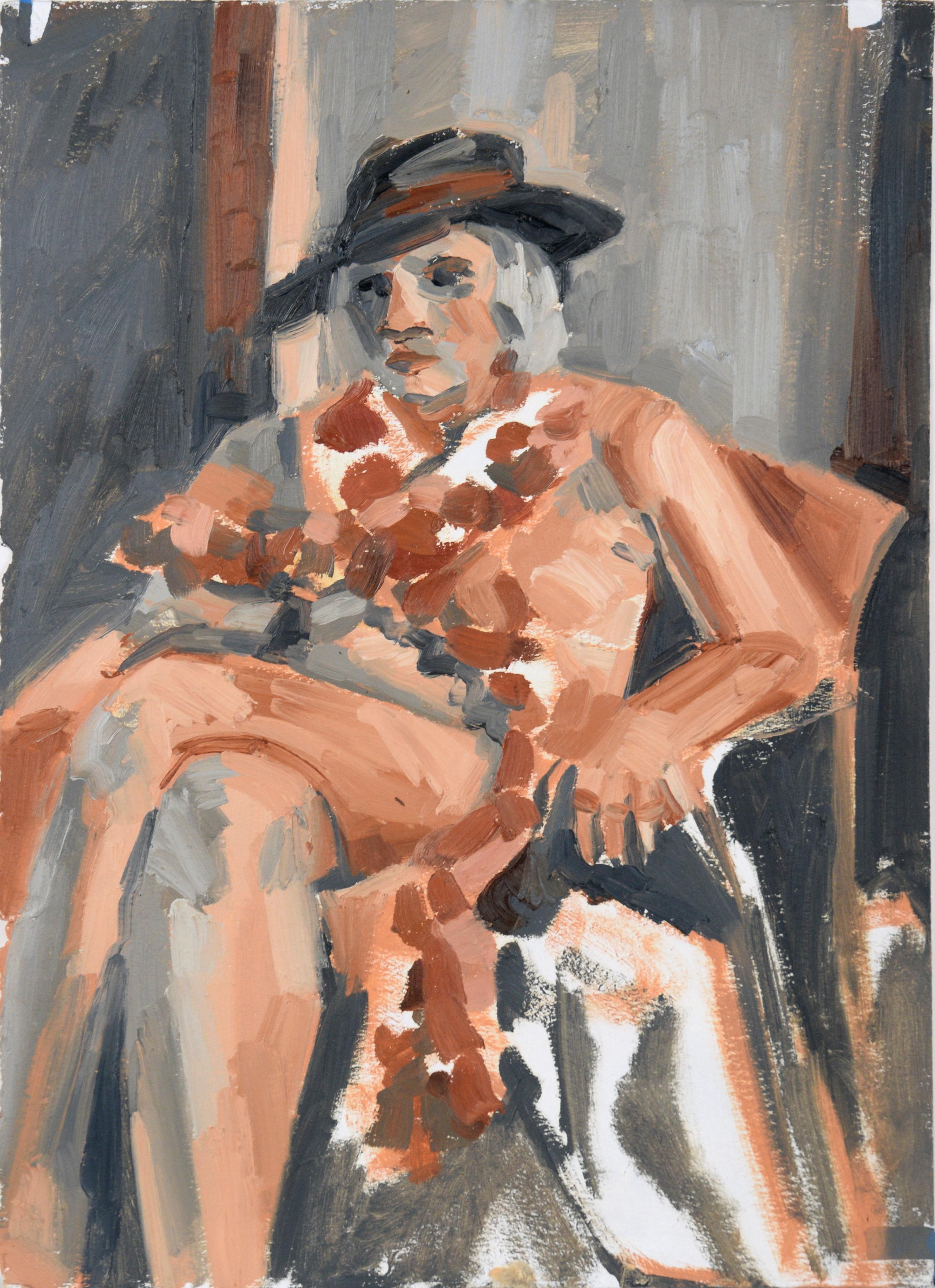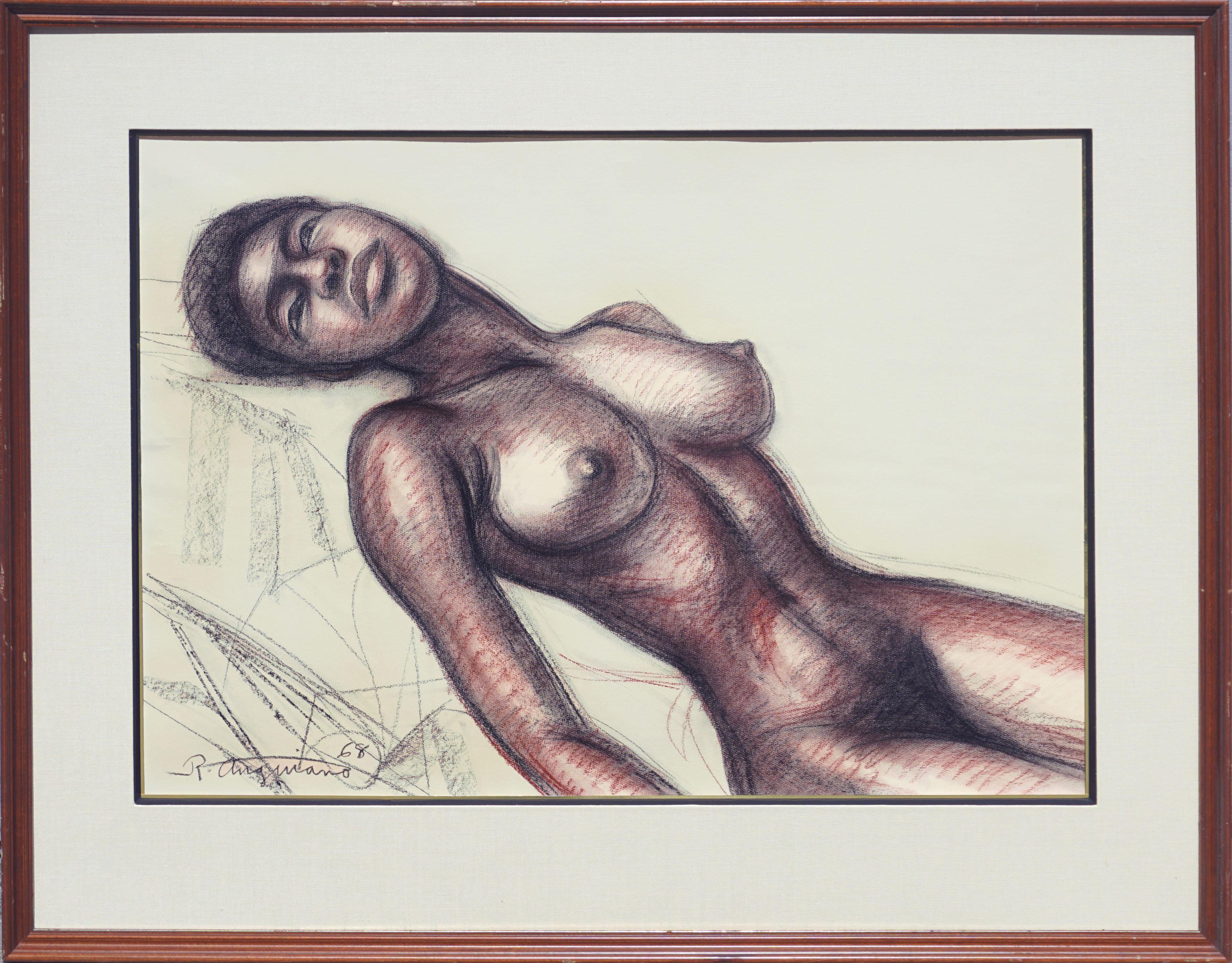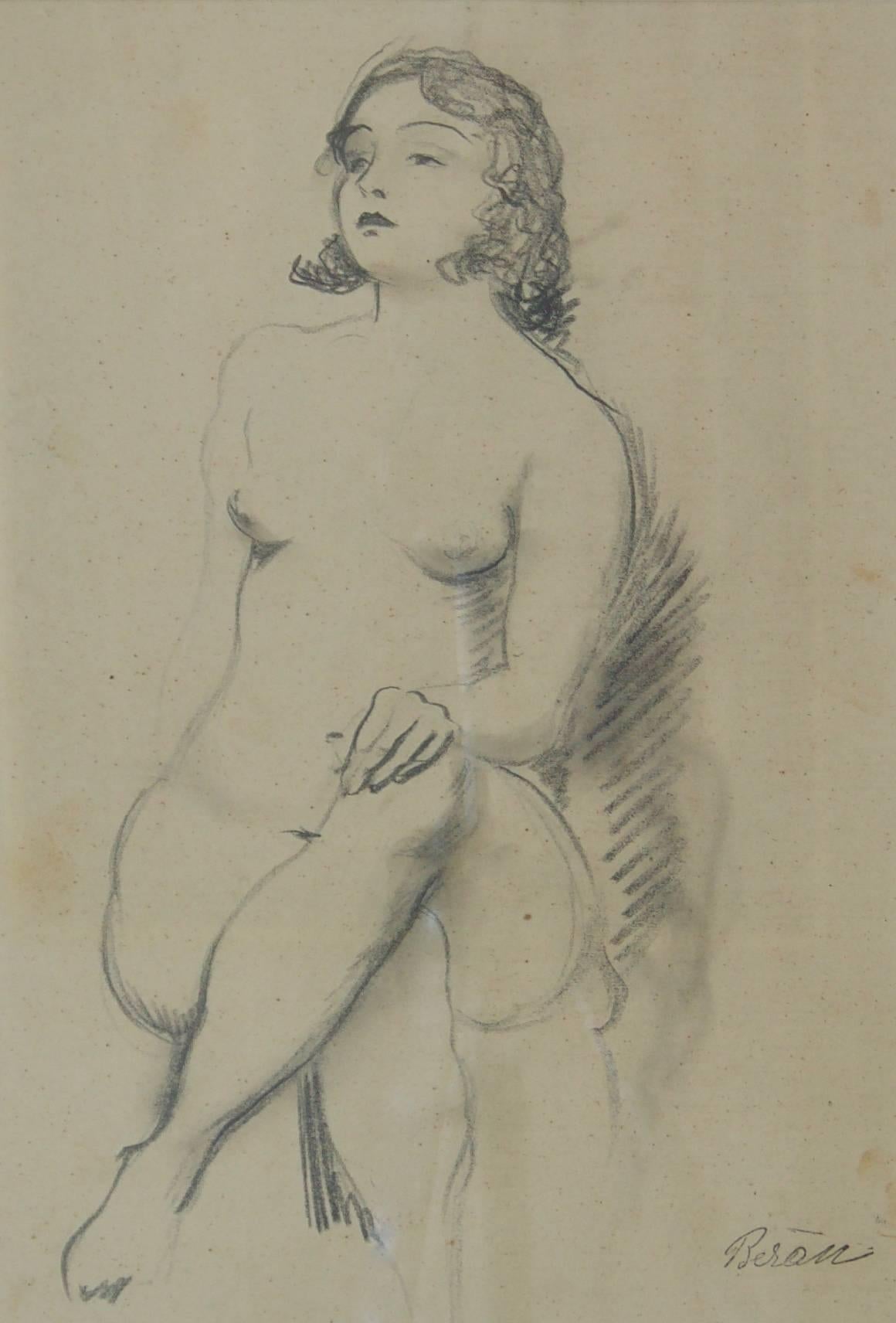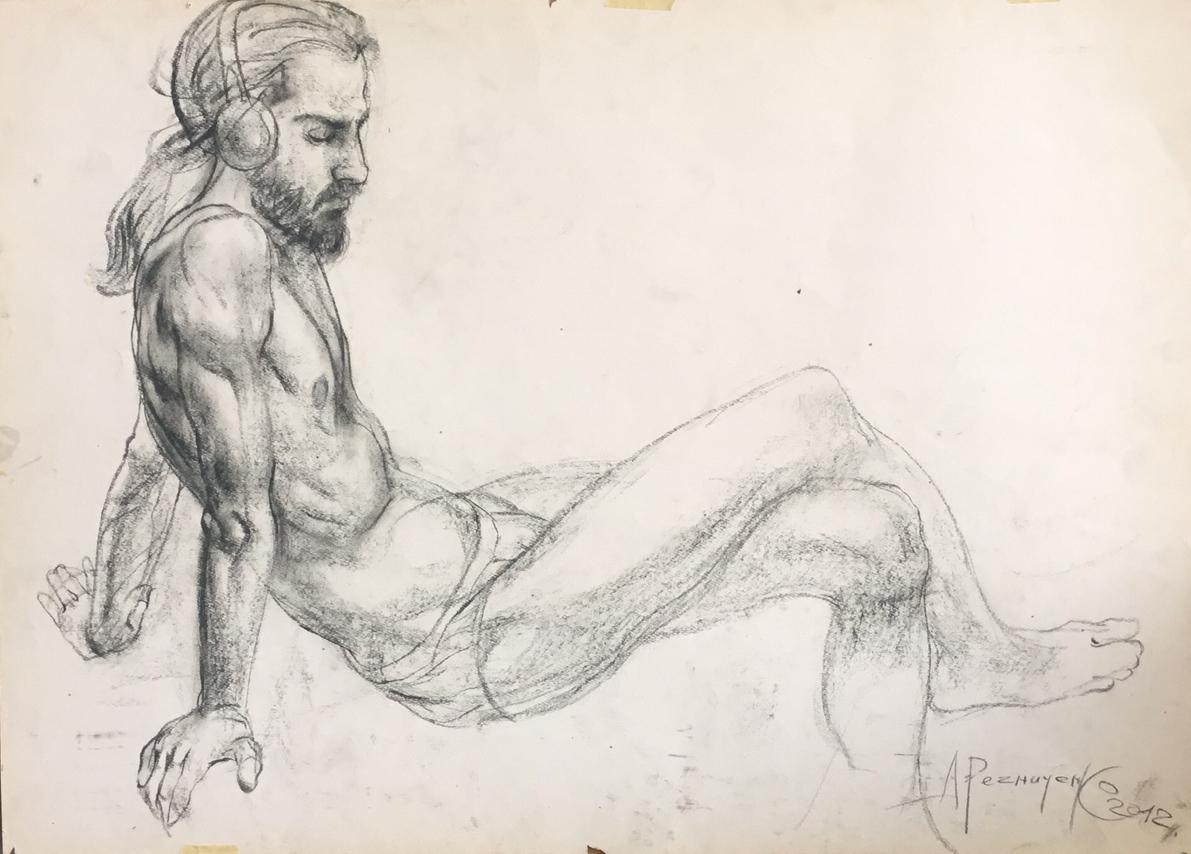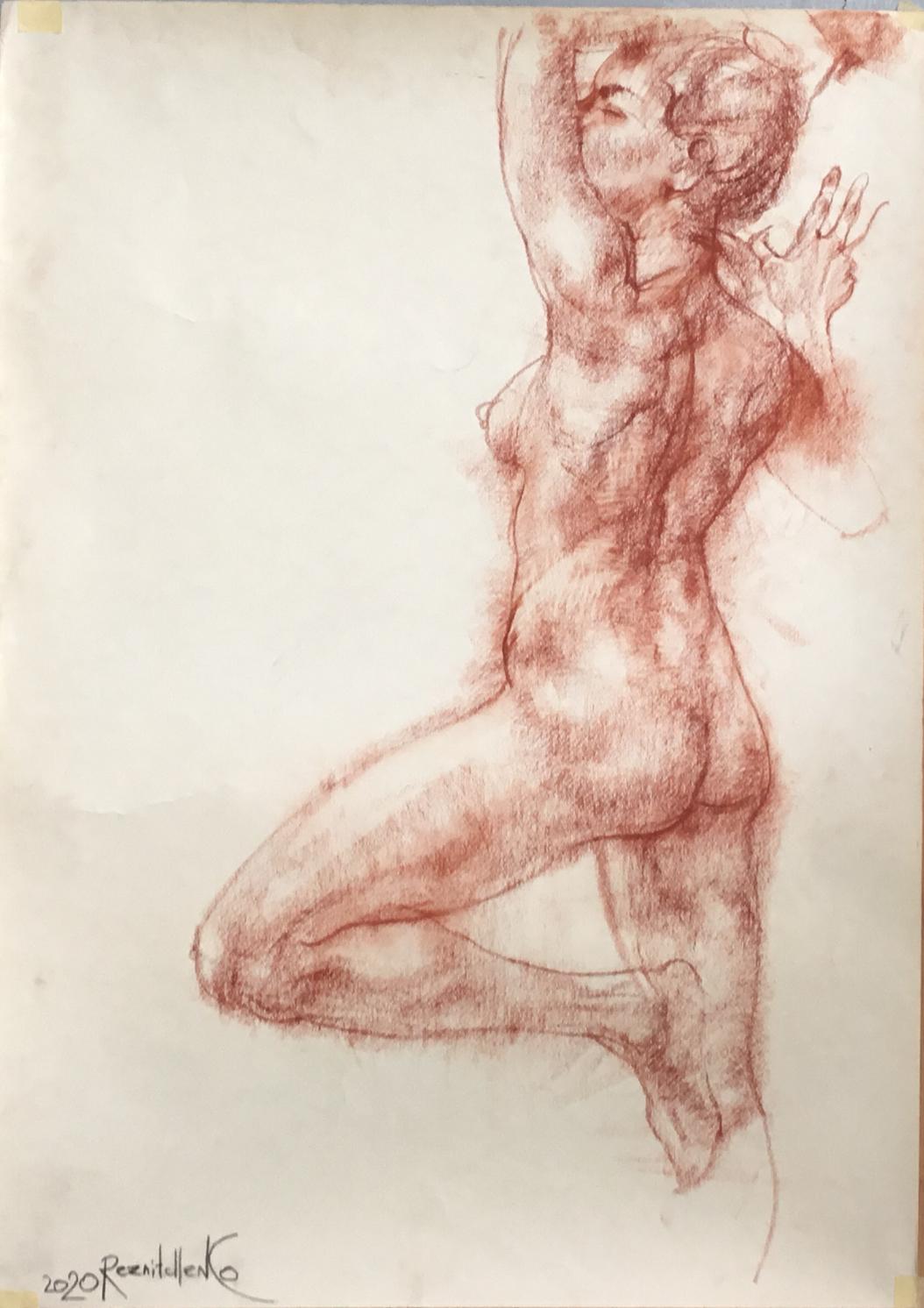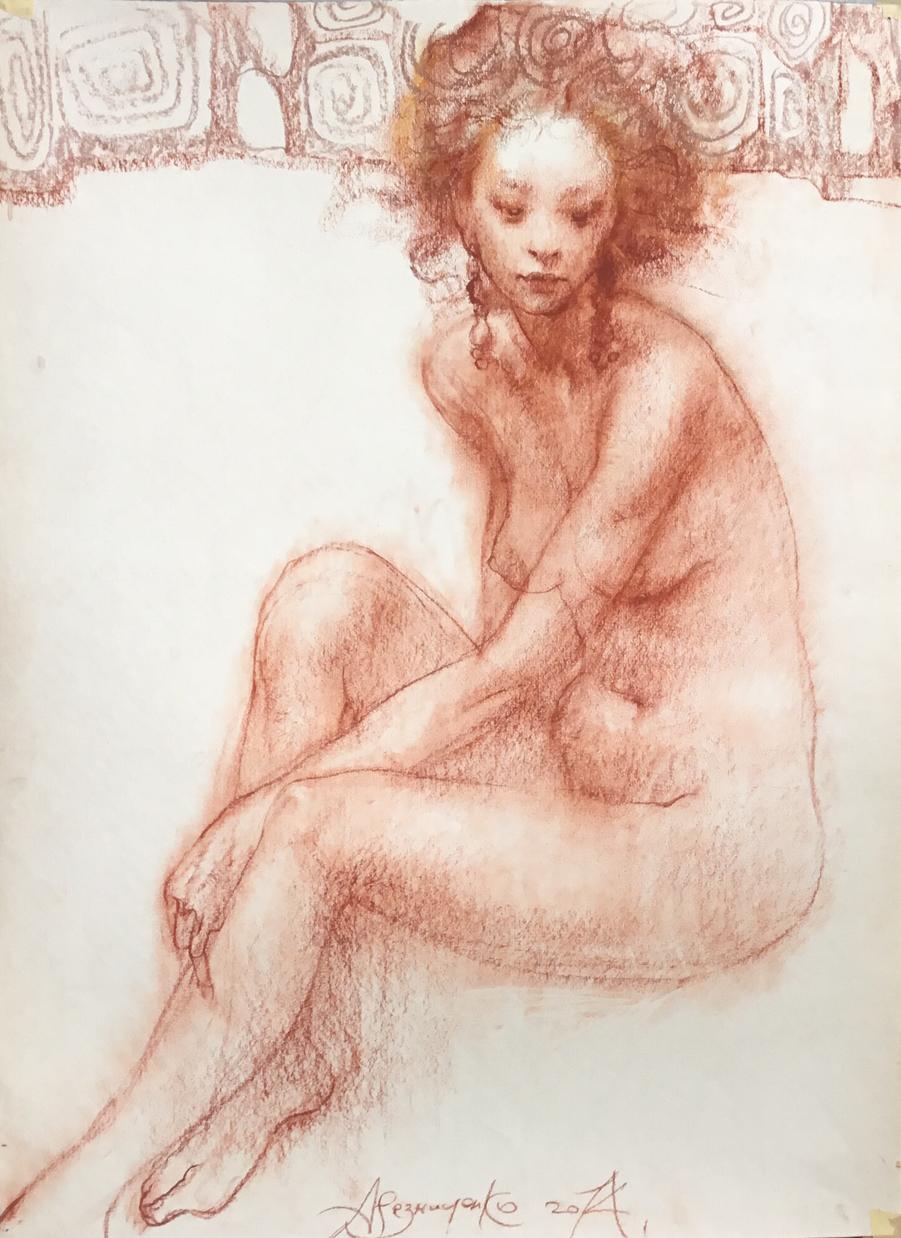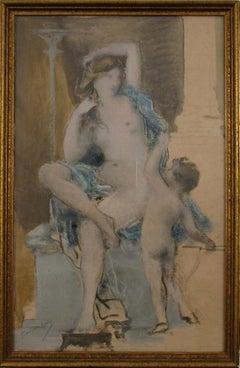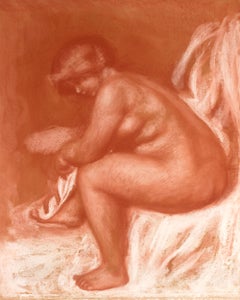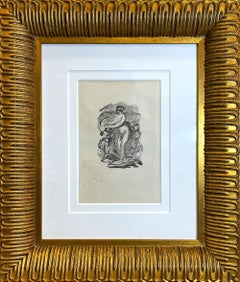
Pierre-Auguste Renoir ** Femme Au Cep De Vigne ** Nude Woman With Vine
View Similar Items
Pierre-Auguste RenoirPierre-Auguste Renoir ** Femme Au Cep De Vigne ** Nude Woman With Vine1904
1904
About the Item
- Creator:Pierre-Auguste Renoir (1841-1919, French)
- Creation Year:1904
- Dimensions:Height: 26 in (66.04 cm)Width: 30 in (76.2 cm)Depth: 3 in (7.62 cm)
- Medium:
- Movement & Style:
- Period:
- Condition:
- Gallery Location:Fort Lauderdale, FL
- Reference Number:Seller: 1Dibs-311stDibs: LU145227520682
Pierre-Auguste Renoir
Pierre-Auguste Renoir began his artistic career as a porcelain painter but began copying paintings at the Louvre in 1860 and eventually entered the studio of Charles Gleyre, where he met Claude Monet, Frédéric Bazille, and Alfred Sisley. The four friends began painting in the forest of Fontainebleau, although Renoir always remained dedicated to figure painting and portraits influenced by Gustave Courbet.
In the summer of 1869, Renoir painted for two months alongside Monet at La Grenouillère outside Paris. After several of his paintings were rejected by the Salon in the early 1870s, he decided to join Monet in establishing the Impressionists, who sought to capture modern life including everyday people, streets, and surroundings.
Renoir's penchant for portraiture attracted the attention of a range of patrons with avant-garde sensibilities and sustained him financially. His doubts about the spontaneity and impermanence of the Impressionist aesthetic led him to refuse to participate in the fourth Impressionist exhibition in 1878. Instead, he decided to look back to the Old Masters, leaving for Italy in 1881 to continue his self-education in the “grandeur and simplicity of the ancient painters.” He returned enamored of Raphael and Pompeii and his figures consequently became more crisply drawn and sculptural in character.
By the late 1880s and early 1890s, Renoir had shifted his investigation of the Old Masters from linear classicism to the colouristic traditions of Titian and Rubens as well as the unabashedly sensual beauty of eighteenth-century French art such as the nudes of Rubens and Fragonard. Renoir's most important series of the decade came from an invitation by the French government to execute a painting for the Musée du Luxembourg, a new museum devoted to the work of living artists. Renoir made five versions of Two Young Girls at the Piano for the Minister of Fine Arts to choose from; the version in the Robert Lehman Collection at the Metropolitan Museum of Art is one of the finest. The subject of Two Young Girls at the Piano recalls eighteenth-century French genre scenes, especially those of Fragonard.
In the early twentieth century, despite old age and declining health, Renoir persisted in artistic experimentation. He took up sculpture and continued to paint portraits attesting to his continued admiration of Renaissance art. Renoir was also drawn to an arcadian ideal of Mediterranean classicism in his art. This artistic preoccupation is nowhere more apparent than in his twentieth-century bathers. The Rubenesque nudes he had been painting reached a level of unprecedented exaggeration in the twentieth century, culminating in the massive Bathers at the Musée d'Orsay.
Find original Pierre-Auguste Renoir prints, paintings and other art on 1stDibs.
(Biography provided by Stern Pissarro Gallery)
- François Lafon (French, 1846-c.1920) Nude Female Portrait France Oil on PaintingBy François LafonLocated in Meinisberg, CHFrançois Lafon (French, 1846-c.1920) Draped nude Woman seated between Pillars with young Child • Oil sketch on paper • Visible image, ca. 35 x 22 cm •...Category
Late 19th Century Impressionist Nude Paintings
MaterialsOil, Paper
- Après le bain (After the bath)By Pierre Auguste RenoirLocated in New Orleans, LAFor Pierre-Auguste Renoir, Impressionism's pre-eminent figure painter, depicting the nude was an exercise in bringing the canvas to life. He once said, “I look at a nude, I see myriads of minuscule shades. I have to find those which will make the flesh on my canvas come to life and resonate.” This compelling portrait by Renoir entitled Après le bain presents the nude figure of a woman in a serene, private moment, absorbed in the task of drying herself after a bath. The artist’s mastery of light and shading is incredible, achieving a sense of vitality in this otherwise ordinary scene. Renoir is celebrated for his figural work, especially his Rubenesque female nudes, however, it was not until the artist was in his forties that he depicted the nude with any frequency. In 1881, Renoir traveled to Italy, where he studied the works of the Renaissance masters and the ancient art of Pompeii and Rome. Upon his return to France, the nude became his favored subject, and he used the motif to combine the spontaneity of Impressionism with the solid modeling of classical painting. Renoir’s medium here, sanguine, a reddish-brown chalk, was used extensively in the Renaissance by Leonardo (who employed it in his sketches for the Last Supper), Michelangelo and Raphael. Its warm hue lends itself well to depicting flesh, and the chalk drawing allows for a greater focus on line, form and texture in a departure from the aspects of color and light that so often preoccupied the Impressionists. Après le bain conveys the impression of arrested motion with perfect naturalness, deftly capturing the moment before the elegant lines of the sitter's form change position. The sitter is almost certainly Gabrielle Renard, the nanny to Renoir’s children and a frequent model for the artist. Gabrielle was the cousin of Renoir’s wife, Aline, and came to Montmartre to work for the family at the age of 16. She developed a strong bond with the family and became a favorite subject for Renoir, appearing in several of his most important works, including his 1911 Gabrielle with a Rose (Musée d'Orsay). When Renoir began to suffer from severe rheumatoid arthritis that would eventually leave him unable to walk and scarcely able to grasp a paintbrush, it was Gabrielle that would assist the artist by positioning the paintbrush between his crippled fingers. Born in Limoges, France in 1841, Renoir began his career as an apprentice to a painter of porcelain wares. He later moved to Paris at the age of 21, enrolling at the prestigious École des Beaux-Arts. It was here, while studying under Charles Gleyre, that Renoir attained a tremendous appreciation for the academic style of painting, a quality that would last throughout his career. This was also when he met Claude Monet and several other classmates, with whom he would later form the Impressionists. Working closely with Monet, Renoir began experimenting with the portrayal of light and its effect on his canvases. The youngest member of the Impressionist movement, an astute Renoir recognized how a subject was constantly changing due to the dynamic effects of light on color. Relying heavily upon his academic training that focused on composition, lines and descriptive details, Renoir distinguished himself among his contemporaries. His intuitive use of color and expansive brushstroke, along with acute attention to his subject, have placed him among the finest painters in history. This work is accompanied by a certificate of authenticity and will be included in the forthcoming catalogue raisonné of the work of Pierre-Auguste Renoir from the Wildenstein Plattner Institute. Circa 1898 Canvas: 43 1/2" high x 35 1/2" wide Frame: 57 3/4" high x 49 1/4" wide Provenance: Galerie Durand-Ruel, Paris (acquired from the artist on January 25, 1899) J. Pereire Collection, France (1966) Sam Salz, New York (before 1981) Claus Virch, Paris French Compagny, Inc., New York Larry Silverstein, New York (circa January 1987) Le Clos de Sierne Gallery, Geneva Galerie Heyram, Paris (October 1987) Francis Gross M.S. Rau, New Orleans Literature: B. Schneider, Renoir, Berlin, 1957, p. 95 (illustrated in color, p. 83) M. Gauthier, Renoir, Paris, 1958, p. 83 (illustrated in color; erroneously dated '1916' and titled 'Woman in her toilet') F. Fosca, Renoir, L'homme et son obra, Paris, 1961, p. 280 (illustrated, p. 95; erroneously dated 'about 1890' and titled 'After the Bath...Category
19th Century Impressionist Nude Paintings
MaterialsCanvas, Paper, Chalk
Price Upon Request - Seated Nude Woman Bay Area Figurative School Abstract ExpressionistLocated in Soquel, CASeated Nude Woman Bay Area Figurative School Abstract Expressionist Seated wearing a hat by Santa Cruz and San Francisco artist Heather Speck (American,...Category
Early 2000s American Impressionist Figurative Paintings
MaterialsPaper, Oil
$1,320 Sale Price20% Off - Mid Century Nude Figure Study of a Black WomanBy Raul AnguianoLocated in Soquel, CACompelling mid century nude figure study of a black woman reclining by Raul Anguiano (Mexican/American, 1915-2006), 1968. Signed and dated lower left hand corner "R. Anguiano." Presented in wood frame under plexiglass. Image size: 25"H x 34"W. Framed size: 35"H x 43.75"W. Raúl Anguiano was born in Guadalajara, Jalisco, on February 26th, 1915. He started drawing cubist pictures at the age of 5, taking as his first models movie stars, as Mary Pickford, Pola Negri and Charlie Chaplin. Anguiano first artistic influence or aesthetic emotion came from the Holy Family by Rafael Sanzio. At the age of 12, Anguiano attended Guadalajara's Free School of Painting under the tuition of Ixca Farias. From 1928 to 1933, he studied with the Master painter José Vizcarra, the disciple of Santiago Rebull and José Salomé Piña, and organised the group "Young Painters of Jalisco" with other artists. During this period, Anguiano worked with different kinds of models: workmen, employees and a few intellectuals like Pita Amor. In 1934 Anguiano moved to Mexico City. He began teaching in primary schools and taught drawing and painting at La Esmeralda academy and the UNAM School of Art. Anguiano was a member of the Mexican Artistic Renaissance movement which was started in the 1920's by the Mexican School of Art in which he belonged. This renaissance began with the San Carlos Academy movement -- among whose leaders were Ignacio Asúnsolo and Jose Clemente Orozco -- and which emerged out of the students' and teachers' discontent with the traditional paintings methods (academicism), and the close contact that the young artists had with the problems of Mexico and its people, explaining the marked critical realism to the painters of the time, including Anguiano himself. The same year, Anguiano received a commission to paint his first mural, Socialist Education, a 70 meters fresco located at A. Carrillo School in Mexico City. Other works followed, including Mayan rituals (oils on canvas and wood), for the Mayan Hall in the National Museum of Anthropology, and Trilogy of Nationality (acrylic on canvas and wood), for the Attorney General's Office. In 1936 he moved into his surrealist period, which lasted almost a decade. He painted circus performers and prostitutes. The most notable among his works of the time are: The Madame (gouche, 1936), The Clown's Daughter (oil, 1940), the Pink Circus Artist and the Grey Circus Artist (oil, 1941). Also during this period, Anguiano produced a series of drawings based on his dreams, with cold tones and silver-greys predominating. In 1937 Anguiano joined the Revolutionary Writers and Artists League. Together, with Alfredo Zalce and Pablo O'Higgins, he was also a founding member of the Popular Graphics Workshop, where artists practised a graphic style based on Mexico's folk traditions. This was due to the powerful influence of the recently discovered Jose Guadalupe Posada and Goya. Raúl Anguiano belonged to the so-called "Third Generation" of post-revolutionary painters, along with Juan O'Gorman, Jorge González Camarena...Category
1960s American Impressionist Nude Paintings
MaterialsPaper, Conté, Charcoal
$4,400 Sale Price20% Off - Alberto Standing 3, Original Figurative Painting, Bright Nude Life Drawing ArtBy Judith BrennerLocated in Deddington, GBJudith Brenner Please note that insitu images are purely an indication of how a piece may look. Alberto Standing 3 is a contemporary nude painting by Judith Brenner. This is an orig...Category
2010s Impressionist Abstract Paintings
MaterialsMixed Media, Acrylic, Watercolor, Paper, Pastel, Ink
- Pencil Sketch of Girl Nude Posing - Early 20th Century by Bruno BeranBy Bruno BeranLocated in Watford, HertfordshireBruno was born in 1888 in Bruenn, then part of the Austro-Hungarian Empire. He was the youngest son of a well-to-do family of textile manufacturers. Bruno was a delicate child, but...Category
1930s Impressionist Nude Drawings and Watercolors
MaterialsPaper, Pencil
$1,537 Sale Price20% Off
